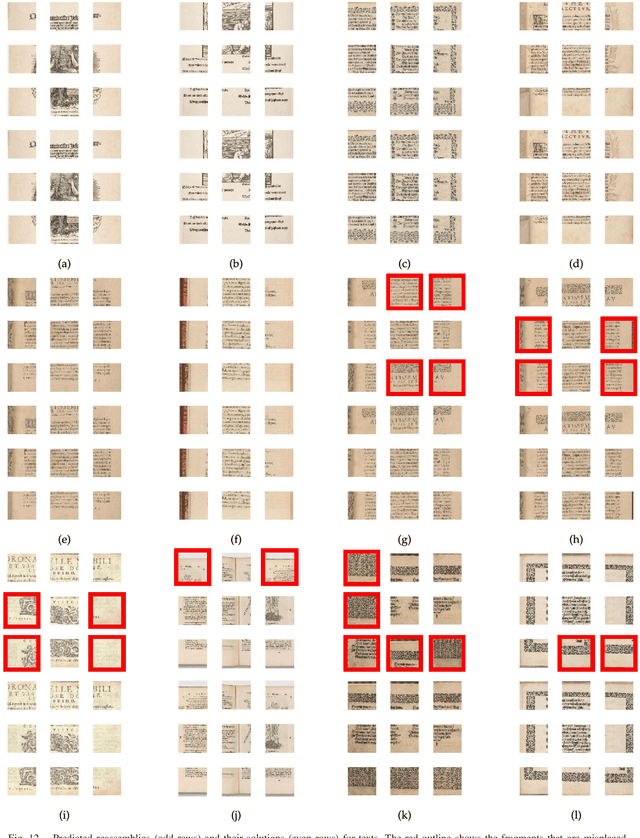Deepzzle: Solving Visual Jigsaw Puzzles with Deep Learning andShortest Path Optimization
Paper and Code
May 26, 2020



We tackle the image reassembly problem with wide space between the fragments, in such a way that the patterns and colors continuity is mostly unusable. The spacing emulates the erosion of which the archaeological fragments suffer. We crop-square the fragments borders to compel our algorithm to learn from the content of the fragments. We also complicate the image reassembly by removing fragments and adding pieces from other sources. We use a two-step method to obtain the reassemblies: 1) a neural network predicts the positions of the fragments despite the gaps between them; 2) a graph that leads to the best reassemblies is made from these predictions. In this paper, we notably investigate the effect of branch-cut in the graph of reassemblies. We also provide a comparison with the literature, solve complex images reassemblies, explore at length the dataset, and propose a new metric that suits its specificities. Keywords: image reassembly, jigsaw puzzle, deep learning, graph, branch-cut, cultural heritage
 Add to Chrome
Add to Chrome Add to Firefox
Add to Firefox Add to Edge
Add to Edge